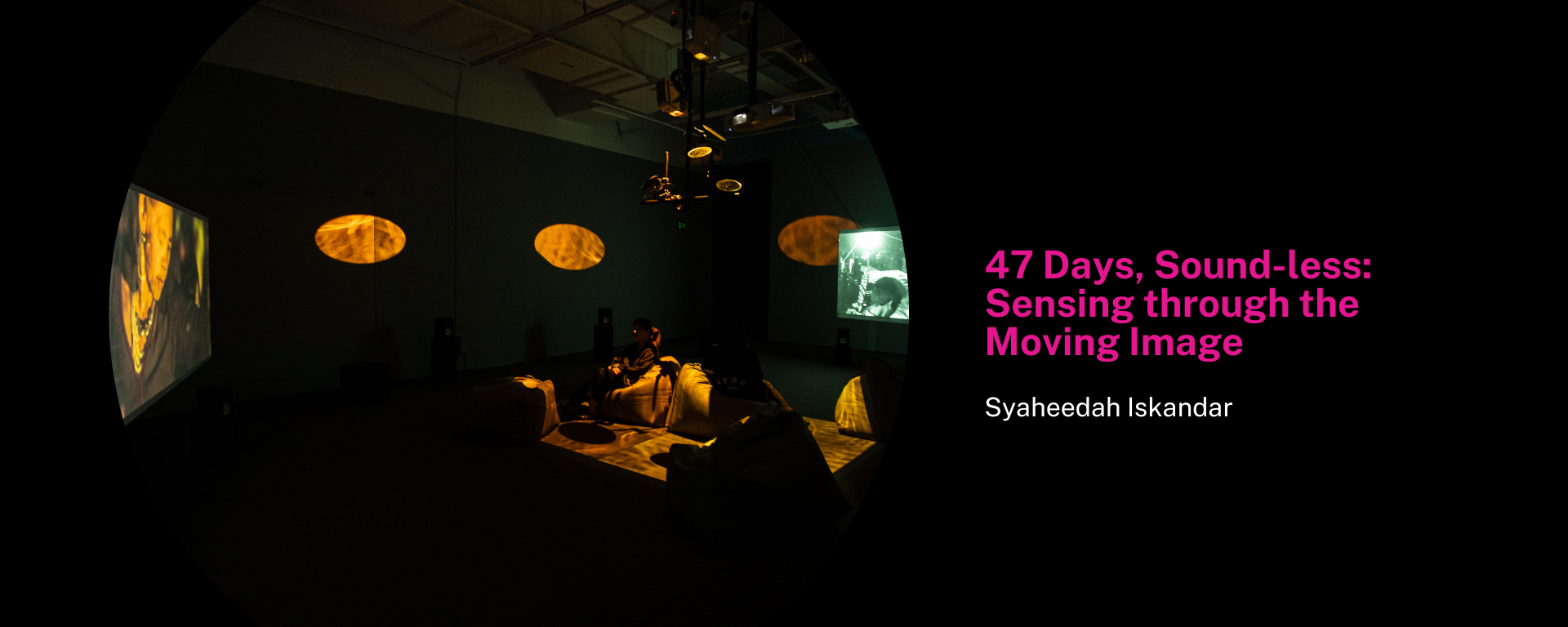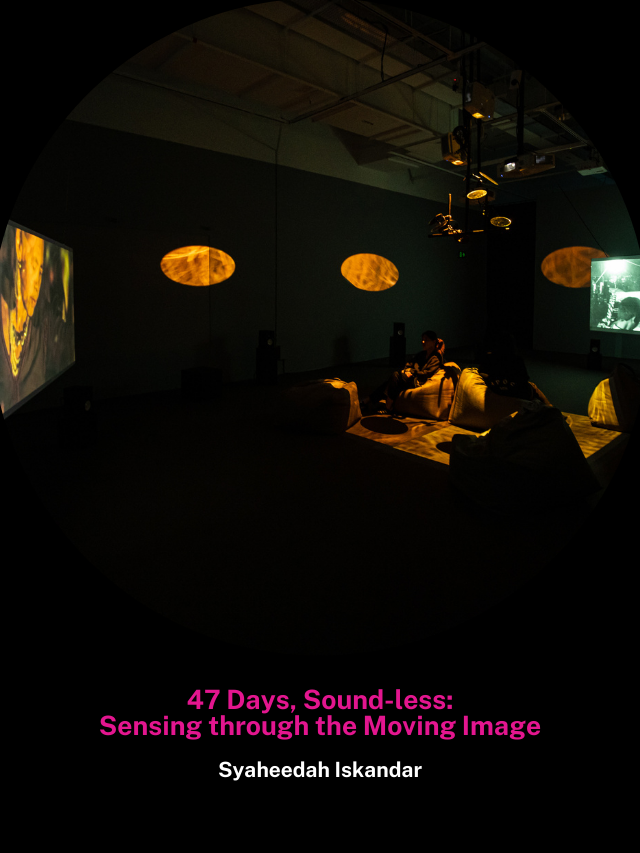47 Days, Sound-less:
Sensing through the Moving Image
19 Jan 2024
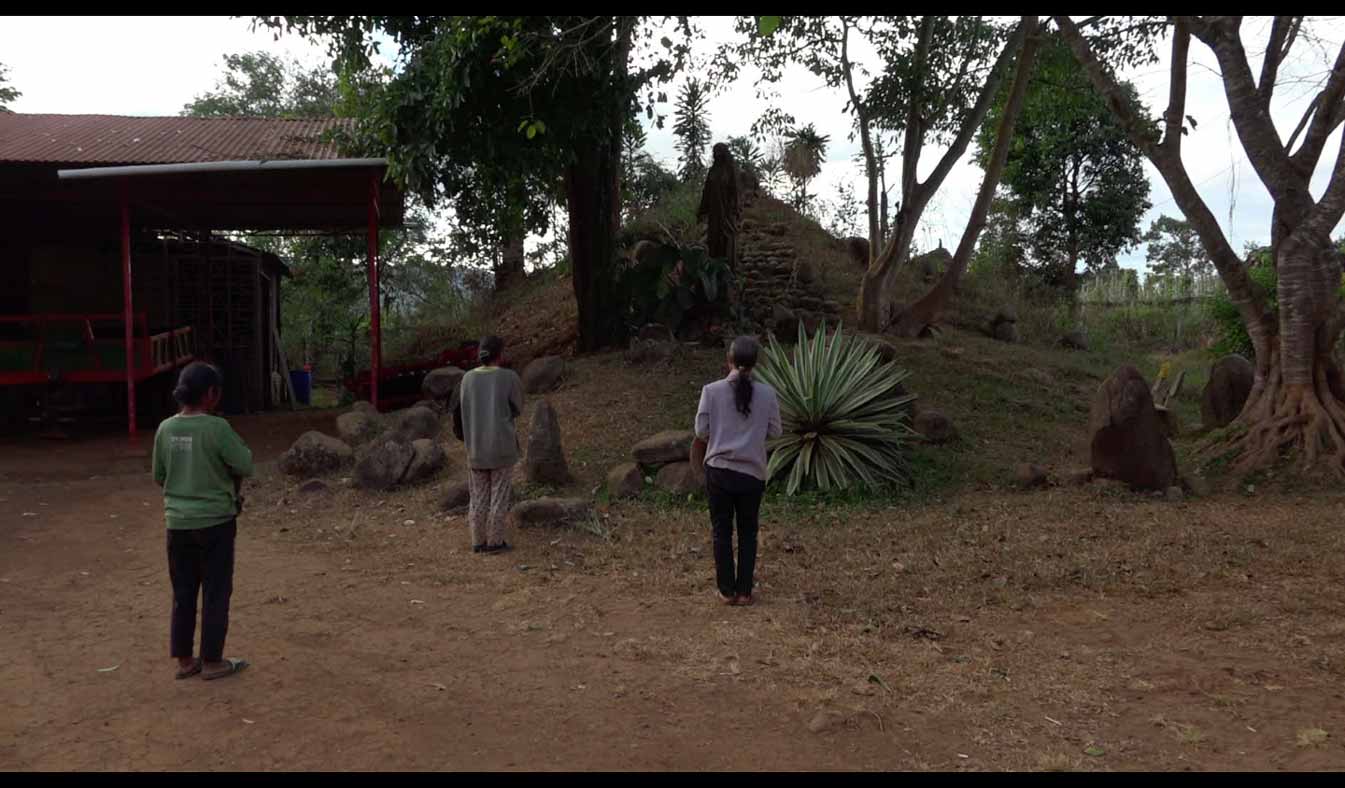
Nguyễn Trinh Thi opens her 2021 film How to Improve the World with a question directed at an off-screen young girl: “Your earliest memor[ies]—are they [in] sound or image?”
The girl replies, unhesitatingly: “Image!”
Later into the film, Trinh Thi follows up: “Do you trust sounds or images better?”
“Images, mum.” The response reveals the girl as Trinh Thi’s daughter.
This fleeting dialogue encapsulates the film’s premise, which focuses on the culture of listening and hearing as practiced by the indigenous peoples living in the Central Highlands of Vietnam . Throughout the film, which documents their relationship with sound as being entangled with their natural element, Trinh Thi goes on to underline other ways of perceiving the world, creating a compelling critical reflection of visuality as taking precedence over other sensory encounters. Exacerbated by the widespread availability of screen technologies, the dependency on visual media continues to predominate for the younger generation, whose visual realities are increasingly entangled with these technologies. Here, Trinh Thi’s questions take on a different tenor, as a mother whose concerns are not entirely unwarranted. Her unease extends beyond this contemporary condition of pervasive globalised and Western cultures being circulated through technology. She also argues that this sensory dominance focusing on sight can be traced to the “impact of colonisation or being colonised.1
Her latest work, 47 Days, Sound-less (2024), continues this exploration, challenging the dominance of vision in cinematic storytelling. It encourages us to rethink, reexamine and reattune our senses around moving images. Borrowing from Ursula K. Le Guin’s novels, such as The Word for World Is Forest (1972), 47 Days presents a fictional narrative about a man who wanders alone in a dense forest with no trail to show whence he came and no memory of who or what he was or is. The visuals in 47 Days are what Trinh Thi identifies as “peripheries,” primarily natural landscapes used as backdrops and uncredited characters and soundtracks from American and Vietnamese movies filmed in Southeast Asia.2 Revealing more than just human perspectives, reconstructed images of trees, leaves and the sky are meticulously woven with sonic echoes of the natural world alongside sounds produced by local and indigenous musical instruments.

Trinh Thi’s practice has seen a consistent trajectory of making space for other modes of sensing. Another recent work, And They Die a Natural Death (2022), can be seen as a predecessor to Trinh Thi’s approach in emphasising the need to listen deeply for 47 Days. Moreover, 47 Days also bridges visual materials and ideas from her earlier works, Vietnam the Movie (2015) and How to Improve the World (2021). Trinh Thi’s assertion that “modes of perception have altered to allow one dominant mode of sensing to take centre stage” is entangled with a critique of colonialism, and has geared her practice with an awareness towards the limitations and potentialities of moving images. Her emphasis on spotlighting the peripheries in 47 Days challenges notions of ocularcentrism while proposing a plurality in sensing and perceiving the inextricable relationship between a place and its inhabitants through the moving image.
What does it mean to look again and again… and again?
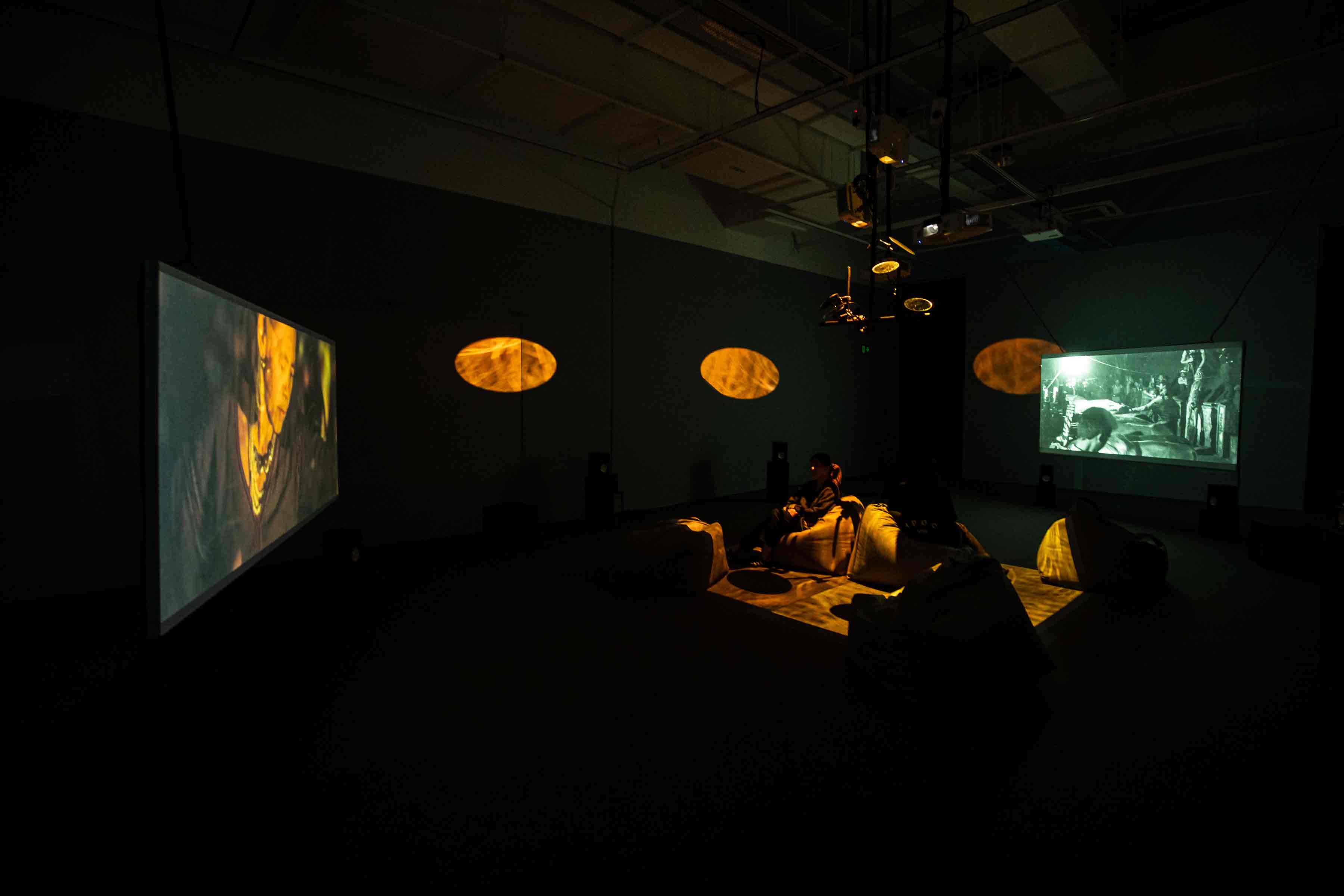
Upon entering the darkened space of 47 Days, Sound-less, viewers are greeted by two prominent projection screens diagonally facing each other. While the projected imagery differs from one another at any given time, there are underlying similarities between both videos. As Trinh Thi has intended, audiences can enter at any point without having to conform to a straightforward beginning and ending typical of a movie experience. Encapsulating the concept of an expanded cinema3, Trinh Thi removes the experience of a single-screen viewing, encouraging viewers to prioritise a nonlinear, exploratory mode of watching.
A sense of place informs the video works: ecological landscapes in forested environments; mountains and skies depicted alongside local natives and wildlife. Yet, this pieced-together footage is inconsistent in its use of effects and colourings. Some segments are high definition, but most are abstract, pixelated or grainy. Some of this footage and ecological landscapes were also shown in an earlier work, Vietnam the Movie. Vietnam the Movie is a collage of clips from well-known Hollywood films, ranging from high-budget feature films to independent productions, documentaries, newsreels, educational films, and military propaganda with the word “Vietnam” in their scenes. This project stemmed from Trinh Thi’s personal collection of movies associated with Vietnam due to the absence of an official film archive in the country at the time.4 For 47 Days, Trinh Thi cuts out the backdrop or background of these films—tropical landscapes filmed in Southeast Asia—and brings them to the foreground. To spotlight the “peripheries” identified by Trinh Thi, the humans in the original footage have been removed because the central line of sight or main subject within these videos is no longer human. Apart from the Jarai people filmed by Trinh Thi, together with this extracted imageries of ecological landscapes, culminated into what we see in 47 Days, Sound-less.
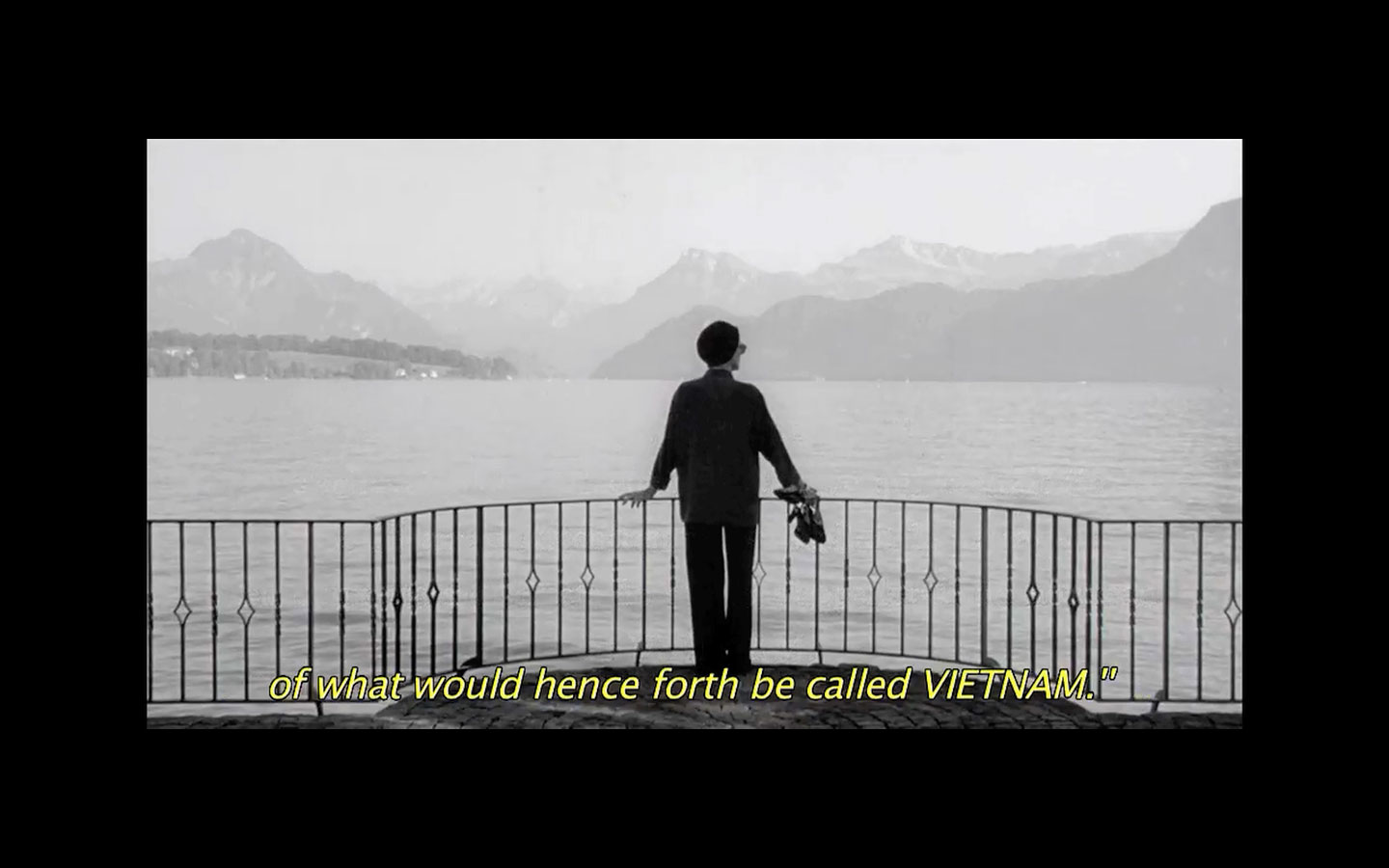
Historically, our modes of seeing today can be attributed to the European legacy of knowledge production centred on rationality. As argued by Aníbal Quijano, the prevailing European paradigm of rational knowledge was not a neutral academic construct but deeply intertwined with colonial power structures. It was shaped within the context of European colonial domination over other parts of the world. This Eurocentric paradigm of knowledge production was an expression of the “coloniality of power”—a term coined by Quijano—perpetuating and reinforcing colonial relationships and hierarchies. In essence, colonialism not only shaped Eurocentric notions of superiority, rationality, and knowledge production, but also reinforced a power structure that marginalised and subjugated non-European cultures while elevating European culture as the norm, fostering the dominance of European perspectives and knowledge systems.5
Moreover, the evolution of visual culture in relation to Eurocentric ideas and their influence on perception and observation in the 19th century was heightened with the emergence of new visual technologies, such as photography and cinema.6 Knowledge about the body’s role in seeing the world led to the realisation that efficiency in many human activities relied on an understanding of how the human eye works. Physiological optics revealed quirks of the so-called “normal” eye, such as afterimages, peripheral and binocular vision, and attention thresholds.7 The intense focus on vision flaws refined the definition of what would be considered normal and led to the development of technologies that enforced on people a standard, “universal” way of seeing disregarding subjectivities or ways of being informed by lived experiences, socio-economic status, religion, race, ethnicity, gender and sexuality. Unsurprisingly, these technologies perpetuated Eurocentric perspectives and power structures. The formation of cultural norms, knowledge systems, and hierarchies of seeing have been affected by Eurocentric ideas of visuality , imposing certain ways of perceiving the world that became rooted in Western perspectives.8
In this context, Trinh Thi’s visual diversion not only challenges our ways of seeing but also questions the human-centred visuality we are regulated to, revealing the colonial history entangled with our contemporary ways of seeing.
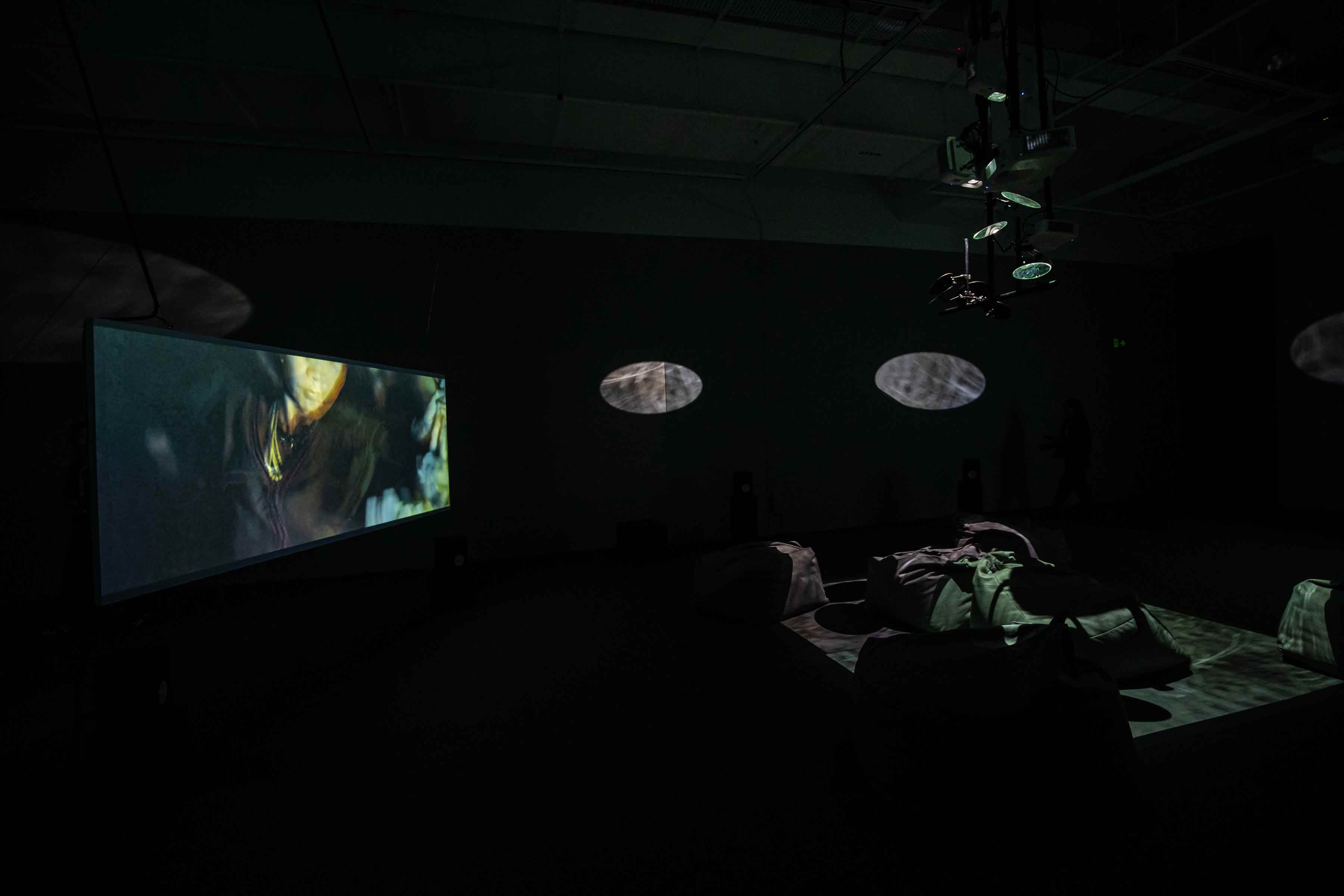
Embracing parallel worlds
Trinh Thi’s commentary on the colonial logic of seeing informs her technique of recycling footage, which is not novel to 47 Days9 but gains especial significance in this light. While Vietnam the Movie is a critical response towards how Vietnam is portrayed—or gazed upon—in mainstream films (with most of them relating to the Vietnam War), 47 Days proposes a countergaze of sorts. Considering that the visual impoetus is entangled with colonial legacies, 47 Days is a refusal not only to be defined by this hegemonic mode of seeing but also to participate in an extractive mode of seeing. By reusing existing footage, the work is not “new” per se, contrary to what one might expect of such video work, with new imagery that would have served our insatiable appetite in today’s hypervisual reality (made no less visible with the ever-growing time-based mediums in contemporary art). Considering the ecological premise of the work, Trinh Thi’s adaptation proposes a slow looking or re-looking of what is already there, situating clearly in the peripheries of our sight.
This also includes footage of the Jarai people, whom Trinh Thi had filmed for another work, How to Improve the World. The reused footage for 47 Days follows a similar, altered formula, where their presence becomes inseparable from the imageries of the natural landscapes. One could argue that Trinh Thi’s approach is an exercise of opacity, given the ambiguity of its visual (abstract, pixelated and grainy) and textual narrative (a loose, nonlinear story structure). However, it allows the agency for the images to exist for what it is not in its totality, which would have been a reductive outcome. By emphasising the re-attuning of our senses and undermining of the imperial power of the human gaze, Trinh Thi’s approach encourages a plurality in how we perceive the world through indeterminate spaces.
This requires making space for the peripheries to exist in the viewer’s experience. Between the two screens, a similar set of imageries is projected upon a system of mirrors, which reflect the fragments of footage onto the surrounding walls. Mimicking a more natural understanding of our visual field, these reflected projections activate the corners of our eyes—being peripheries themselves—disrupting the two screens as the central line of sight. Although similar in imagery, the two screens and the reflected fragments have distinguishably different intentions. Regardless, their synchronisation emulates Trinh Thi’s efforts to actualise “parallel worlds,” implying a pluriversality informed by multiple perspectives and meanings in its deliberate attempt to expand our visual field to what is hidden, invisible or out of sight.10 Utilising mirrors for the first time in her practice, Trinh Thi has credited this element as informed by Southeast Asian animistic practices to connect to “another world” and “explore a mode of looking, showing or making.”
Trinh Thi’s approach demonstrates the “human-spirit sociality and communication” theorised by May Adadol Ingawanij in reading Southeast Asian moving image practices as cinematic animism.11 As explained by Ingawanij, animism in this context is not solely about the belief that objects possess individual spirits or agency. Instead, it signifies a regional framework where humans and spirits coexist, communicate, and share social connections. This belief system shapes an ecosystem of how people experience, relate, and exist together, forming a way to envision possible futures among those marginalised.12 With its mirrors, the installation acts as “cosmological media and mediation,” reifying the plural cosmologies in which Trinh Thi situates her work, encouraging perceptions of multiple worldviews rather than a singular, universal worldview.
While the central line of sight in 47 Days has removed the main actors of the original footage, foregrounding the Jarai people in this work is a significant gesture considering how many of these local extras were used in the background and remained uncredited in these Hollywood films. Trinh Thi’s decentring of the human gaze still applies here, considering their inseparable, embodied relationship to their lands and knowledge systems. Yet, Trinh Thi’s intention is not to encourage access to these communities13 but to highlight an overlooked way of knowing that continues to exist in situated practices and cultural imaginations. As Trinh Thi has elaborated, “This should be a standard perspective, that our human-centred world is not the only world. It’s about getting out of this position of being in the centre or the idea that we know everything.” Trinh Thi’s approach emphasises the need to sit in with our discomfort of not knowing as a response to extractive modes of working or producing knowledge in a time where processing existing knowledge is required more than ever. Thus, it brings awareness to the de-prioritisation of our other four senses and the undermining of their knowledge capacities to teach us.
Re-attuning in the dark
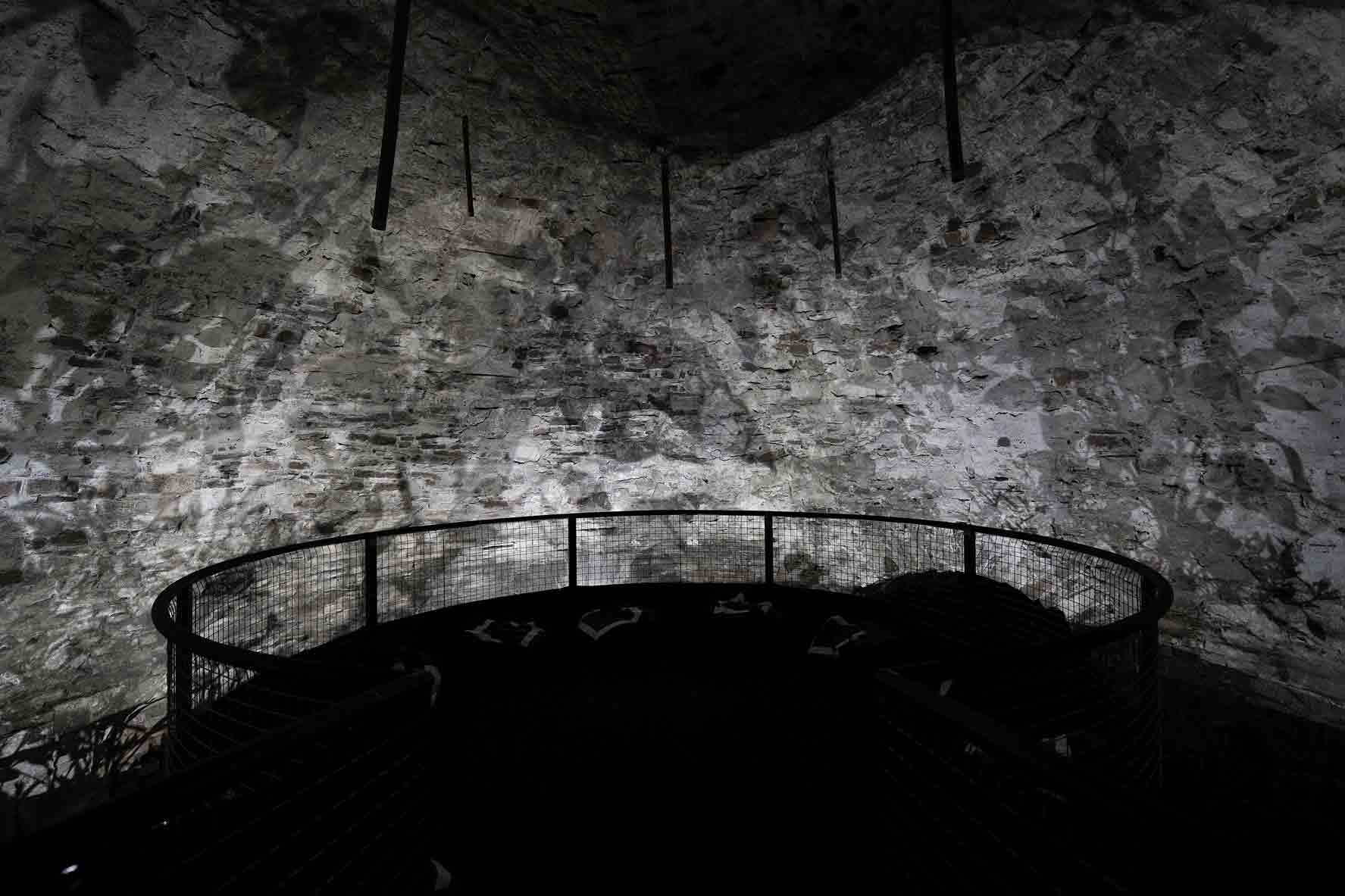
Trinh Thi’s argument suggests that we have overlooked how our other senses have been de-prioritised but also puts forth the danger of being visually oriented, considering how the navigation of the natural world—as compared to urban centres—requires sensorial dependency for survival. In the aforementioned How to Improve the World, Trinh Thi engages with sound as exemplified by the Jarai people and how their perception of the world is conceived through hearing and listening. Within these natural capacities, the knowledge of their land is formed and their mode of knowing is cultivated. To this end, Trinh Thi redirects her attention to aural landscapes. What is worth noting is how “the unknown, the invisible, the inaccessible”14 are actualised in this need to bring forth darkness as an encounter. And They Die a Natural Death (2022), a work produced for Documenta fifteen (2022), features a deliberate absence of video content. Returning to fundamental elements reminiscent of early or pre-technological approaches, the work revolves around creating moving images without a camera, using chilli plants and light to cast shadows on the walls of a fortress instead, in a method resembling shadow puppetry. One notable component of the work integrates sound through bamboo flutes activated by wind data from a remote location in Vietnam, coinciding with the interplay of shadows. In paying close attention to the sense of hearing in this work, Trinh Thi realised that our senses are in constant competition, especially when overwhelmed by visual stimuli, leaving little room for the other senses.
47 Days sees the recurring emphasis on “close listening” 15 amid the visible reality that we are regulated with, beyond the everyday embellishments of sound in an urban landscape. Much like And They Die a Natural Death, the experience of 47 Days within a darkened space forces a close listening of these images despite their unclear, abstract forms. The sounds themselves are not distinguishable, and their meaning is relative to the reaction of the viewer or listener. For example, at any given point, a listener might hear bird calls, crickets, cicadas, trees swishing, a person gasping, a group of people chanting, metal clanging, bells ringing, sounds from musical instruments—sounds which generally can seem innocuous. Yet for some moments, they might hear a persistent growl perhaps coming from an animal or a loud rumbling perhaps coming from a machine . Without knowing what it is, a sense of dread follows.
It is in this “formlessness” of sound—amid the visible and invisible—that emerges what sound theorist Salomé Voegelin describes as “slices through the visual frame” by re-framing the listener in that temporality of dread. Voegelin emphasises how listening shapes our perception of the environment, arguing that sound constructs possible worlds beyond what is immediately visible.16 After all, sound constitutes and lives in the unseen dimension of our world, invisible elements that silently orchestrate our acts of perception.
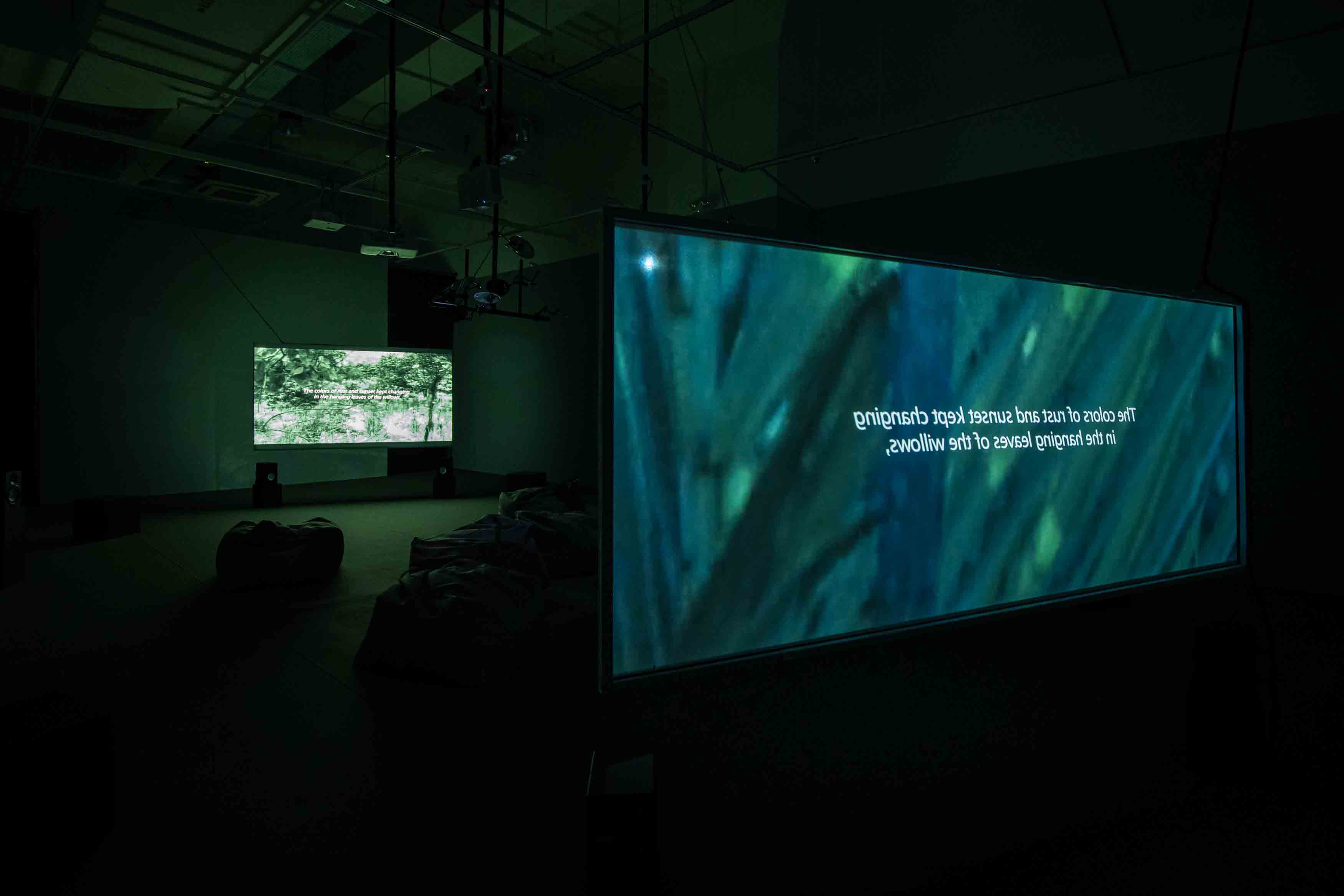
Making sense: a balancing act
With our contemporary world predominantly shaped by visual stimuli, rebalancing our sensorial state of being by making space for senses beyond sight is vital. Visual perception often dominates our understanding and interaction with the environment, and our over-reliance on visual stimuli has made sensory overload a common experience, creating a detachment from our immediate surroundings and hindering our capacity to engage fully with the world. Privileging visual perception exclusively limits our holistic engagement with the environment, overlooking valuable dimensions and respite that other senses can offer. We know that sensory modalities such as hearing, touch, taste, and smell enrich our experiences, fostering a deeper and more nuanced understanding of the world around us. Trinh Thi’s aural exploration reminds us of that fact and how hearing, for example, can help reveal subtle nuances in a space that visuals alone cannot convey accurately. Trinh Thi’s approach can be read as a mnemonic device to nudge us on the hazards of visual dominance.
More importantly, by redirecting of our vision to the peripheries, as stressed in 47 Days, Sound-less, Trinh Thi’s work both underscores an ecological discourse and reveals entanglements between visual-centric ways of being and colonial legacies rooted in extractivism. Trinh Thi’s altering of these imageries from background to foreground, from clarity to ambiguity, requires us to reprocess what, why, and how we see. Her development in sensorial inclusivity in her moving image practice reveals its potentialities in its ability to challenge, destabilise, and transform dominant norms of being. Her continuous attempt encourages diverse ways of knowing and understanding the world. It recognises multiple epistemologies, knowledge systems, and ways of making sense of reality beyond the Western-centric modes of knowledge production. In her attempt to navigate the unseen worlds—be it in darkened or marginalised spaces—it is not about forcibly accessing the unknown but being aware of the many possibilities of experiencing the world. As Voegelin illustrates on building sonic possible worlds and how we may be able to construct non-hegemonic realities, the idea is not to portray soundscapes as ‘otherworldly, mystical, or strange’. Instead, it offers different perspectives on how we perceive the world and our ways of inhabiting it. It presents alternative possibilities, revealing what the world could be and how we might live differently within it.17
1Nguyễn Trinh Thi, as quoted in an interview with Syaheedah Iskandar, “Intuitive Cues for Listening to Images,” in Nguyễn Trinh Thi: 47 Days, Sound-less, exhibition booklet published by the Singapore Art Museum, 2023, 14.
2Extracted footage include Hollywood and foreign movies: Rescue Dawn (2006), Apocalyse Now (1979), Platoon (1986), Dien Bien Phu (1992), Deer Hunter (1978), Casualties of War (1989), Hamburger Hill (1987) and Vietnamese films: Bài ca ra trận (1973), Vĩ tuyến 17 Ngày và Đêm (1972), Vợ chồng A phủ (1961), Chung một dòng sông (1959) Rừng Đen (2008).
3Expanded cinema can be summarised as redefining the boundaries of traditional film, encompassing experimental techniques like multiple screens, live elements, and diverse media forms. It aims to engage audiences in immersive and unconventional audiovisual experiences, often surpassing the confines of typical film projection. This movement pushes the limits of cinematic expression, inviting active participation and sensory exploration beyond conventional movie theatre setups. Readers can read more at Tate Modern. “Art Term: Expanded cinema” Tate Modern. https://www.tate.org.uk/art/art-terms/e/expanded-cinema (accessed 16 November 2023).
4Minh Nguyen, “Filmmaking as Resistant Poetic Amplitude: A Conversation with Nguyen Trinh Thi,” Art Asia Pacific, Sep/Oct 2019, pg. no. 96 - 103
5Aníbal Quijano, "COLONIALITY AND MODERNITY/RATIONALITY," Cultural Studies, Vol 21, Issue no. 2 - 3 (2007), pg. no 168-178. In this same article, Quijano explained the problematics of subject-object dichotomy that was prevalent in European mode of observational study. The relationship between European culture and other cultures was established as one between 'subject' and 'object.' This perspective hindered meaningful communication or exchange of knowledge between cultures since the paradigm only allowed for an external relationship between the 'subject' (European culture) and the 'object' (other cultures).
6Robert Stam and Ella Shohat, Unthinking Eurocentrism: Multiculturalism and the Media (London, New York: Routledge, 1994), 13 - 54. Notably, they have argued that in film studies, “one name for Eurocentrism is Hollywoodcentrism” due to the global imitation of Hollywood's successful mode of production.
7Jonathan Crary, Techniques of the Observer: On Vision and Modernity in the Nineteenth Century (Cambridge, London: MIT Press, 1992), pg. 1 – 24.
8Sumathi Ramaswamy, “Introduction: The Work of Vision in the Age of European Empires,” in Empires of Vision: A Reader, ed. Martin Jay and Sumathi Ramaswamy (Durham, London: Duke University Press, 2014), pg. no. 1 - 22.
9Pamela N. Corey, “Siting the Artist's Voice,” Art Journal, Vol. 77, no. 4 (2018): 90, JSTOR: https://www.jstor.org/stable/45142626 (accessed 9 July 2023).
10Taken from a published interview with the artist. Singapore Art Museum, Nguyễn Trinh Thi: 47 Days, Sound-less – Intuitive Cues for Listening to Images. (Singapore: Singapore Art Museum, 2024), 9 – 10.
11May Adadol Ingawanij, “Cinematic animism and contemporary Southeast Asian artists’ moving-image practices,” Screen, Vol. 62, Issue no. 4 (2022): pg. no. 550.
12Ibid., 551 – 553.
13Taken from a published interview with the artist. Singapore Art Museum, Nguyễn Trinh Thi: 47 Days, Sound-less – Intuitive Cues for Listening to Images. (Singapore: Singapore Art Museum, 2024), 9. It is worth noting that Trinh Thi acknowledges her position as an outsider and has wrestled with the ethics of representing these communities. She remains aware of the limitations in accessing these communities by expressing a reluctance to create an artwork that falsely implies a full comprehension or access to their worlds, opting instead to respect the boundaries and refrain from assuming a level of understanding beyond her own perspective.
14Nguyễn Trinh Thi, “How to Improve the World (2021)” https://nguyentrinhthi.wordpress.com/2021/11/28/how-to-improve-the-world-2021/ (accessed 27 November 2023).
15Philippa Lovatt, “Foraging in the ruins: Nguyễn Trinh Thi’s mycological moving-image practice”, Screen, Vol. 62, Issue no. 4 (2022): pg. no. 564. I am borrowing Lovatt’s interpretation of close listening as a way to understand Trinh Thi’s aural approach, which emphasises the importance of paying attention to the quiet aspects of a place, and the narratives or stories these sounds might reveal.
16Salomé Voegelin, Sonic Possible Worlds (New York, London: Bloomsbury, 2014), pg. no. 1 - 25.
17Ibid., 22.

